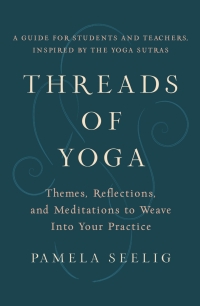Lesson Plan: Contentment
Radiant Yoga consists of three parts. Parts 2 and 3 of the book contain chapters that each correspond to a specific theme for a class. Chapters open with an introduction to the class theme for readers to digest and incorporate into their teaching. Additional information around that theme such as quotes, meditations, and mantras are offered to help build a beautiful class. Each chapter also contains a specific script as a resource or inspiration. Below is an example of a partial script for a class with the theme Contentment.
Teacher Script
Today’s Theme is Contentment. This concept is found in Patanjali’s Yoga Sutras:
Book 2, Sutra 42 states:
“by contentment, supreme joy is gained”
In our culture, being content is considered a state of mind that is determined by outside circumstances. The yoga perspective offers a different view. Contentment is a practice that can and should be expanded and increased. This practice lessens anxiety, is an antidote to sadness, and is considered a key to happiness.
“by contentment, supreme joy is gained.”
When we find ourselves unhappy, we may fall into the default societal response which typically blames sadness on not being rich enough or pretty enough. If we could just buy a new car or lose 10 pounds all would be well. While this idea may seem true, it’s not. This is an illusion. Being content and feeling grateful is an inner state of mind not necessarily dependent on outside circumstances. And it is something that you can practice. That is the inner yoga.
When you turn your attention inward and quiet the mind, you can begin the practice of santosha or contentment. We must first take stock of our inner environment. When focusing inward, we can witness how the mind is constantly thinking of the past or the future. This unconscious nature of the mind sabotages our natural contentment. Once we are aware of this, we can begin to train the mind by reining it in and directing our thought process to the here and now.
We’ll start with an opening meditation that will help us practice Santosha:
[if students have been sitting long, have them readjust to get comfortable]
Opening meditation: [may alternatively be used as a closing meditation]
Come to a comfortable seat. Feel the body relaxed, your heart lifted, shoulders down. Bring the attention to your breath. According to the ancient yogis, contentment is not a feeling based on circumstance. We can learn to increase our feelings of contentment using the mind. It’s something that we can get better at to reveal our natural happy state. We’ll start with a meditation that helps us to feel contentment. Let your mind be relaxed, but don’t allow the mind to wander off. Stay with the meditation.
Closing the eyes, take a nice breath in, and as you exhale feel the body relax. Another breath like that. Now,…relax into the knowledge that you are safe, and that you live in a safe community. Take that in, you are safe, and you live in a safe community. Take stock of your body, your good health, and your body’s ability to heal itself. Be thankful that you can feel your steady breath and hear my voice. Begin repeating silently to yourself the mantra; “All is well.” [pause] “All is well” as you slowly inhale, and “all is well” as you exhale. Allow the mind to accept “All is Well”. If the mind resists or distracts, just notice that and gently bring your attention back to the mantra. As you exhale, feel a softening in the heart area. Continue a few more breaths repeating the mantra silently, softening the heart area with the exhale. Don’t think of anything in particular, just feel the energy of “all is well”. Breathe into this energy, and let it move through you like medicine.
Relax into this mantra for about 8 more breaths. [then silence]
[Ring chime to come out of meditation]
Slowly open the eyes and make your way slowly to tabletop pose. Don’t allow the thoughts to come rushing in. The breath is the focal point now. Inhale into cow pose, exhale to cat.
[Insert physical poses]
[Add quotes throughout class where appropriate]
Quote: “The grass is always greener where you water it.” Anonymous
While practicing asanas, remind students to find their comfortable edge, and then to truly be content with where they are physically. No straining or struggling. Work with the body and trust that over time, with consistent practice, there will be progress.
Savasana: A guided relaxation continuing the theme of contentment.

